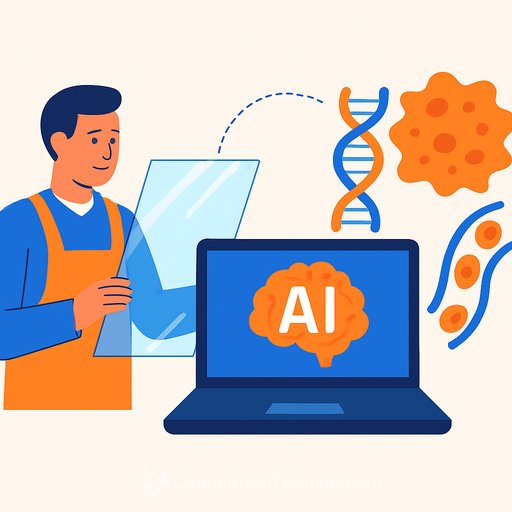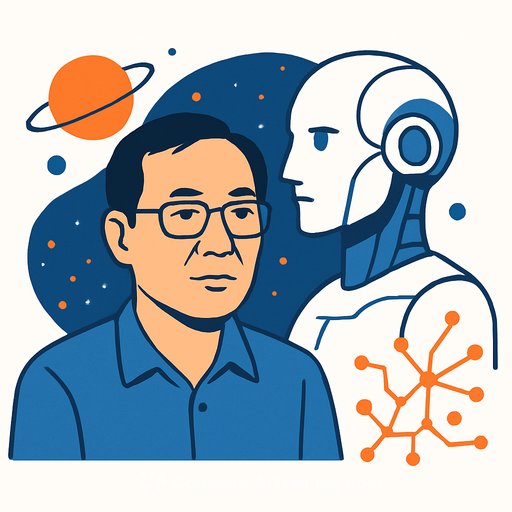AI tools decode order in biological "chaos" to guide cancer care, wound healing, and vascular therapy
James Glazier, professor of Intelligent Systems Engineering at the Luddy School of Informatics, Computing, and Engineering and director of the Biocomplexity Institute, is part of a team building AI tools that read the hidden structure in messy biological patterns. The work targets practical gains in personalized cancer treatment strategies, wound healing, and vascular diseases. The collaboration includes researchers from the University of Virginia and Canada's TRIUMF national particle accelerator center.
Two peer-reviewed studies lay out a unified approach to interpret noisy spatial structures in growing tissues, improve medical image interpretation, run faster simulations, and support therapy optimization. Both studies emphasize open science, with datasets and code made publicly available for the research community.
A unified way to read noisy tissue patterns
The team presents a first end-to-end framework that can predict, classify, and infer biological processes directly from images of complex tissue structures. Patterns like capillary branching or immune-cell dispersal look irregular from sample to sample, yet they arise from shared rules. With the right analysis, those patterns carry signals that can help diagnose disease or track healing.
Study 1: Deep-learning surrogate for capillary growth (over 500x faster)
A deep-learning surrogate model predicts how capillary networks evolve from images alone, running more than 500 times faster than traditional simulations. It forecasts where new sprouts form, how branches link up, and how open spaces close, conditioned on cellular behaviors and environmental cues. This speed makes it practical to explore large parameter spaces that used to be out of reach, exposing biological drivers of capillary dysfunction.
Study 2: From image to mechanism (inverse inference)
A companion study shows that AI can estimate which underlying conditions shaped a given pattern. From a single image, the model infers likely mechanisms such as cell adhesion strength or response to chemical signals. That matters for diseases like cancer and diabetic retinopathy, where adhesion and chemotaxis are disrupted; such estimates could support diagnosis, staging, and the selection and tuning of treatments.
Why this matters for scientists and clinicians
- Speed: Orders-of-magnitude faster surrogate modeling enables broad parameter sweeps, sensitivity analysis, and "what-if" studies under realistic time constraints.
- Mechanism-aware imaging: Moves beyond morphology to infer process-level variables that clinicians and researchers can act on.
- Reproducibility: Open datasets and code support benchmarking, extension, and integration into existing pipelines.
- Generalization: Methods extend beyond capillaries to tissues whose organization emerges from stochastic development, including liver and pancreas.
- Decision support: Bridges images to hypotheses about disease drivers, helping prioritize diagnostics and therapy strategies.
Open science and publications
The studies appear in PLOS Computational Biology and in Machine Learning: Science and Technology. For reference, see the journal sites: PLOS Computational Biology and Machine Learning: Science and Technology. The authors made datasets and code publicly available to accelerate follow-on work.
What to explore next
- Multi-modal validation: Combine histology, OCT, or intravital imaging to test model transfer across modalities and species.
- Uncertainty: Add calibrated uncertainty and identifiability checks to prevent overconfident inferences from limited images.
- Clinical linkage: Correlate inferred parameters with patient outcomes to refine triage, dosing, and timing of interventions.
- Scale and dimensionality: Extend surrogate and inverse models to 3D growth and longer time horizons.
Glazier notes that while these papers center on capillary patterning, the approach applies broadly to tissues whose organization is shaped by chance and local rules-and to diseases that arise when that organization breaks down. The practical upside is straightforward: give doctors and researchers tools that explain what an image shows, why it looks that way, and how to respond more effectively.
Your membership also unlocks:






